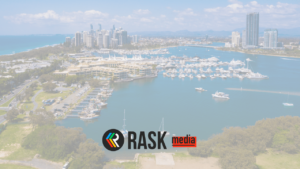BHP Group Ltd (ASX: BHP) has announced its FY20 result today, which included a lower dividend and plans to divest coal assets.
BHP FY20 report
BHP announced that its FY20 continuing operations underlying EBITDA (click here to learn what EBITDA means) fell by 5% to US$22 billion.
Continuing operating profit from its operations fell 11% to US$14.4 billion. Its continuing underlying attributable profit dropped 4% to US$9 billion. Continuing operating cash flow fell 10% to US$15.7 billion.
Its total attributable profit was down 4% to $7.96 billion and earnings per share (EPS) dropped 2% to US157.3 cents. The result included an ‘exceptional loss’ of US$1.1 billion relating to the impairment of Cerro Colorado, a provision for the cancellation of power contracts, COVID-19 costs and the current year impact of the Samarco dam failure. COVID-19 costs were US$348 million according to BHP.
The result was driven by the continuing strength of iron ore with demand from China.
Capital and exploration expenditure was within guidance at US$7.6 billion. It’s expecting capital and exploration expenditure to be approximately US$7 billion in FY21 after deferring a number of petroleum projects, and an expected US$8.5 billion in FY22.
Ongoing projects
BHP said that its six major projects under development are progressing well, with the first production from Atlantis Phase 3 achieved in July 2020 and the Spence Growth Option and South Flank expected to deliver the first production within the next 12 months.
The resource giant said it’s continuing to advance its exploration programs in petroleum, copper and nickel with results of the third phase of the drilling program completed at the Oak Dam copper discovery in South Australia currently under analysis.
BHP dividend and balance sheet
BHP said that its final dividend will be US$0.55 per share. That brings the total dividend to US$1.20 per share, which is 10% lower than 2019.
The commodity giant’s net debt was US$12 billion at the end of FY20, up from US$9.4 billion a year ago. However, this is at the low end of its target range of between US$12 billion to US$17 billion. The new accounting lease standards has increased net debt by US$1.6 billion.
Coal exit?
BHP noted that the world is rapidly changing with decarbonisation with steel makers looking to reduce their carbon intensity.
The company owns a variety of coal assets including 80% of the mettallurgical coal operation BHP Mitsui Coal (BMC) joint venture which is comprised of low cost mines which produce lower quality coals. It also has energy coal assets, though this is a small part of the overall picture (around 3% of its net asset base). It owns 100% of the New South Wales Energy Coal (NSWEC) asset and a 33.3% stake in the independently operated Cerrejon mine in Colombia.
It’s looking to divest its interests in BMC, NSWEC and Cerrejon. It will consider ways of maximise the value, including through a demerger of an independent, listed company and trade sale opportunities.
Summary
This was a reasonable result from BHP under the circumstances. I’m not sure how much further BHP can grow its profit under the current situation. I think the best time to buy resource shares is when the commodity price is at a low point, which isn’t now in my opinion. There are other ASX dividend shares that I think could provide more reliable income over the longer term.
[ls_content_block id=”14948″ para=”paragraphs”]




